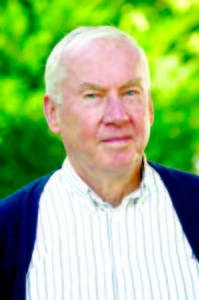Small World: Syria simplified
By Henry Precht
BN Columnist
Big-time columnists often write by ticking off their points as if for an exam, e.g., “Three obstacles to…†or five myths about…†Let me try, presenting five causes behind the Syrian conflict. The first two are rarely-voiced environment linkages:
• Before the present troubles began in 2011, Syria had one of the world’s highest population growth rates (2.4% down from 3.2 in 1947-94). Women averaged between four to six children. The strain on the undeveloped economy meant unemployment reached 25%. Idle, poorly trained young men are a menace to any regime lacking the resources to help them.
• From 2006 to 2009 Syria experienced severe drought, bringing crop failures and the migration of maybe 1.5 million people from the countryside to urban areas. The worst climate event in modern times. For over a century conditions in the eastern Mediterranean pointed to progressive climate change. Weak, dry winds failed to bring moisture from the sea to cool the high temperatures over the desert-like farmlands. We’ve seen this before — violence when scarce water and excess population drive folks to revolt and the government is unable to help. Think civil strife in Sudan’s Darfur and in Yemen.
• Overlay these man-made conditions with religious grievances. Many Sunnis feel that the minority Alawite sect, which runs the regime, discriminates against them while the regime protects Christians and Druse and is essentially secular. For years the country enjoyed relative peace sometimes broken by Sunni uprisings — as now.
• Since 1970 the country has been under the brutal control of the Assad family and its thuggish enforcers. No independent opposition was tolerated. An authentic police state. Yet, there was calm on the Israel border and the United States cooperated on antiterrorist intelligence.
• Stir into this deadly stew outside interventions — the “foreign hand,†beloved by conspiracy theorists. With the Arab Spring revolts of 2011, Arab autocrats friendly to the United States tumbled — Tunisia, Egypt, Bahrain (almost), and Yemen. Saudi Arabia and other rich oil Arabs bought the loyalty of their youth. Then, it became the turn of regimes hostile to Washington — notably Syria and Libya to experience rebellion. Were uprisings inspired or funded in the West?
When demonstrations broke out five years ago, the Damascus regime clumsily tried to put them down with deadly force. To the protesters’ rescue came the Saudis and their wealthy friends, creating and arming a Sunni-led opposition, including Al-Qaeda and ISIS. Turkey joined them and played a crucial supply role along Syria’s northern border. To counter Assad’s opponents and support an ally, Iran and the Lebanese Shia fighters Hezbollah sent in weaponry, advisors and fighters. Pretty soon, Washington was sending supplies and advisors and bombing ISIS. Russia, fearing its ally Assad might topple, sent their planes to attack his enemies, especially ISIS (which Moscow fears might infect its Moslem populations).
Possibly the most effective fighters against ISIS are the Syrian Kurds, who seem to aspire to their own independence. For that reason, they are bitterly opposed by Turkey, which continues to be engaged in a similar struggle with its own Kurds and fears contamination from across the Syrian border.
Life became unbearable for over four million of Syria’s 23 million souls. They moved first to neighboring Jordan, Turkey and Lebanon, then in increasingly large numbers to Western Europe. There, they have generated discord between and within EU countries.
All of the parties — minus certified terrorists and Kurds — came together in a conference, then broke apart, then together, then apart. The idea is to provide cover for a settlement imposed by the powers outside.
What will end the conflict? Over the short term, nothing can correct the effects of climate change and population growth. Nor will religious tensions be easily eased nor a brutal history forgotten. Yet, it is essential for Syria to survive as a state with institutions that can resist the anarchy of religious fanaticism. That means Assad and his enablers will have to remain in power for a transition period while — with luck — responsible leaders emerge from his opponents to take the reins of government.
It will also mean an end to foreign meddling and probably a neutral peacekeeping force. All this will require firm pressure by Washington on its friends and foes alike.
Not an easy accomplishment in an election year with a sharply divided political spectrum for three reasons:Â 1.) ignorance of Syrian realities on the part of our politicos; 2.) their bias for or against regional actors; and 3.) the precedence given domestic political advantage over international (and national) needs.
Henry Precht is a retired Foreign Service Officer.



